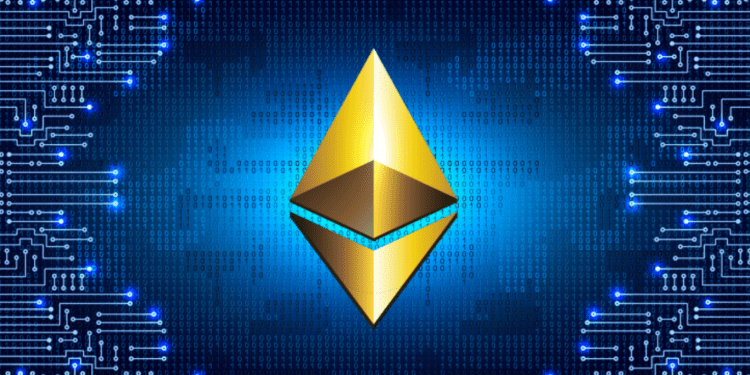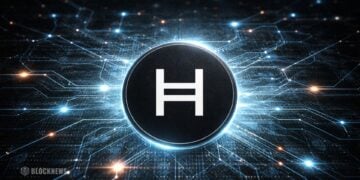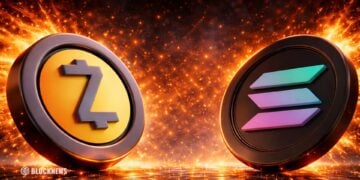A recent Ethereum Improvement Proposal is about to greatly enhance the security and functionality of NFTs by introducing dedicated wallets exclusively for NFTs. This adds an extra layer of protection to steal an asset. Unauthorized individuals will need access to the user’s NFT wallet and regular wallet.
With improved security measures, ERC-6551 instills confidence in collectors and creators, safeguarding their valuable digital assets. Moreover, dedicated wallets simplify sending and receiving NFTs, improving the overall user experience.
Composability
One of the notable features introduced by ERC-6551 is composability. It allows for bundling related assets into cohesive profiles, such as other NFTs and tokens. This feature enhances user experiences, particularly in Web3 games, as players can create inventories of game-related assets stored within an ERC-6551 token.
Previously, each asset existed as a separate token in the user’s wallet, resulting in a fragmented experience. With ERC-6551, transferring or selling an NFT containing bundled assets ensures that every purchase is seamlessly transferred. This simplifies asset management and unlocks new possibilities for creating composite collections and engaging gameplay experiences.
Identity
Identity is another crucial aspect enabled by ERC-6551. NFTs using this proposal possess their own independent identity, allowing them to interact autonomously with DApps. This means that an NFT’s functionality is not solely dependent on the wallet that holds it but on the unique properties and capabilities inherent in the NFT itself.
By associating an NFT with an on-chain identity, ERC-6551 opens up opportunities for loyalty programs and in-game rewards based on an NFT’s past behavior. In addition, platforms can leverage an NFT’s identity and reputation to determine creditworthiness or reduce counterparty risks. This expands the scope of NFTs beyond their traditional role as digital collectibles, transforming them into powerful and self-contained entities.
Provenance
Provenance is a crucial concept addressed by ERC-6551. It tackles the issue of limited information about an NFT’s past transactions or usage by providing a comprehensive picture of an asset’s transaction history and utility. With ERC-6551, NFTs can offer more insightful and specific information about past interactions and transactions.
This transparency is valuable, primarily when an NFT has been sold over the counter, as it provides detailed information about the buyer, the price, and any other relevant transactional data. Provenance enhances transparency and strengthens the trust and perceived value of NFTs by providing a deeper understanding of an asset’s journey and impact.
Dependency
Dependency is another game-changing feature introduced by ERC-6551. It empowers NFTs to interact independently with other on-chain assets or platforms, significantly expanding their capabilities. An NFT using ERC-6551 can own additional assets or tokens that enhance its performance, appearance, or functionality. It can seamlessly interact with other platforms or smart contracts, leveraging its unique properties and capabilities. Dependency grants NFTs their on-chain personality and story, making them more interactive and immersive for collectors and enthusiasts.
Challenges
Compatibility and Adoption
ERC-6551 faces challenges of compatibility and adoption. Not all NFT projects currently support the ERC-6551 standard, particularly collections that deviate from the ownerOf method—which enables users to query the blockchain or smart contract that governs the NFT collection to determine which on-chain addresses currently possess a particular token.
NFT collections that deviate from the ownerOf method may not immediately benefit from token-bound accounts for the following reasons:
- Compatibility: Token-bound accounts are designed to work specifically with the ERC-721 and ERC-1155 standards, which include the ownerOf method as a standard feature. An NFT collection that implements a custom ownership structure may not be compatible with token-bound accounts by default.
- Technical Integration: Implementing token-bound accounts requires technical integration and support from the NFT collection and the platforms or wallets that enable token-bound functionality. If a popular NFT collection has already been developed without considering the ERC-721 or ERC-1155 standards, it may require additional development and updates to integrate token-bound accounts effectively. This can take time and effort from the project’s developers.
- Community Adoption: Users, collectors, and platforms must recognize the benefits and value of token-bound accounts and be willing to adopt them. It can take time for users to understand and trust the new ownership structure provided by token-bound accounts, mainly if they are accustomed to the existing ownership mechanisms of the collection.
- Migration Challenges: If a popular NFT collection with many existing tokens wants to adopt token-bound accounts, it may face challenges related to migrating the ownership data and preserving the historical records of ownership. Migrating data from a custom ownership structure to a token-bound account model requires careful planning, coordination, and execution to ensure a smooth transition without disrupting the existing ecosystem.
Securing ERC-6551
Another crucial aspect to consider is the need to secure ERC-6551. The increased functionality and broader interaction capabilities of ERC-6551 NFTs make them potentially attractive targets for hackers. Therefore, maintaining robust security measures and staying vigilant against vulnerabilities and exploits is crucial to safeguard the integrity and value of ERC-6551 NFTs.
Furthermore, ERC-6551 introduces a new layer of complexity and functionality to NFTs, necessitating user-friendly and intuitive experiences. Users must understand how to create, access, manage, and transfer token-bound accounts and their assets.
Conclusion
In conclusion, ERC-6551 represents a revolutionary step forward for NFTs, offering enhanced security, improved functionality, and a wide range of possibilities for the digital asset landscape. Furthermore, ERC-6551 empowers NFTs with more excellent value, utility, and interactivity by introducing dedicated wallets and smart contract capabilities.
As the Ethereum ecosystem continues to evolve, further advancements and refinements are expected, fueling innovation and creating new opportunities in the NFT space. While challenges exist regarding compatibility, adoption, and securing token-bound accounts, the potential of ERC-6551 to reshape the way we interact with digital content is undeniable.














